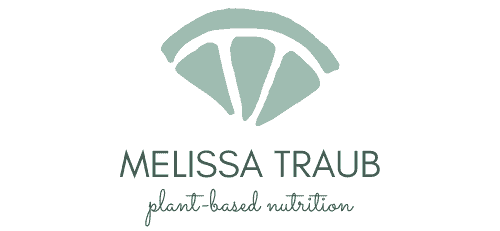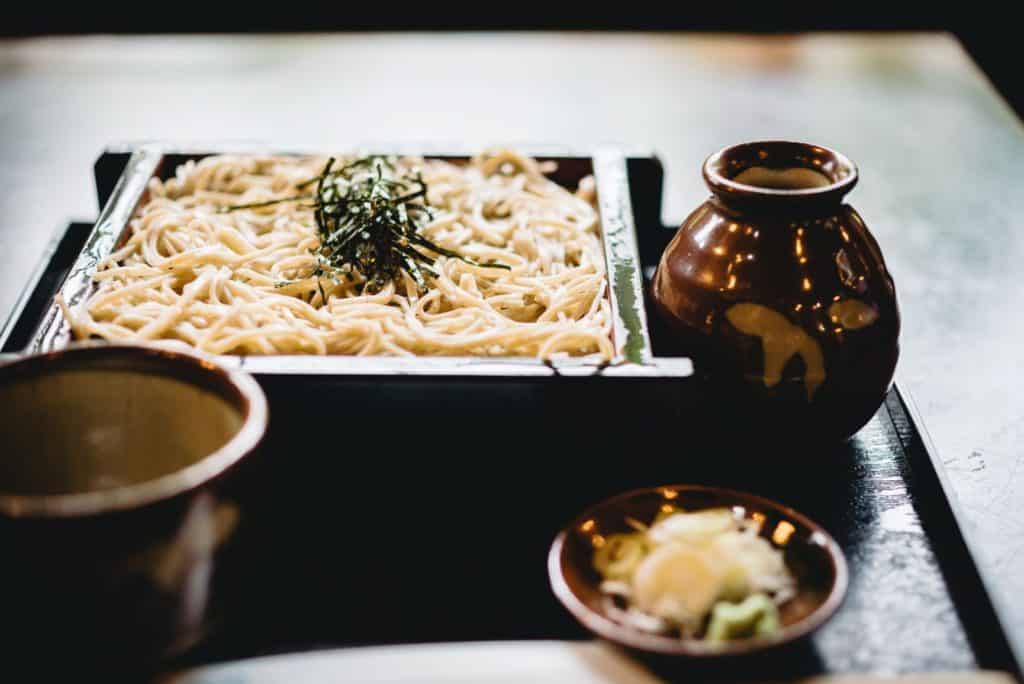These healthy cooking essentials for college students can help you prepare for college living and eating – especially for apartment life. Being able to cook meals for yourself can help you feel good, save money, enjoy your food more, and set yourself up for long-term good health.
This article is intended for those with apartments, but if you’re living in a residence hall. it may give you some ideas too. Dorm cooking and eating is a bit more limited, generally to a microwave and mini-fridge, and many colleges restrict other cooking appliances for fire safety and electrical use reasons.
Table of Contents
Nutrition Guidelines
The Dietary Guidelines for Americans, 2020-2025, recommend choosing a healthy dietary pattern with nutrient dense foods. They recommend that people say within their calorie limits, and limits their intake of added sugar, saturated fat, sodium, and alcohol. You can read more from the Top 10 Things to Know About the Dietary Guidelines for Americans.
How do you plan what’s healthy to eat? Here are some suggestions. The Harvard Healthy Eating Plate is a good starting point for food groups and the relative proportions for meals, based on scientific evidence.
You can use the USDA MyPlate Plan to enter your information and get an idea of how many servings of food groups are recommended for you.
The Oldways Food Traditions includes recommendations for vegetarian and vegan eating, and cultural patterns including Latin, Asian, African, and Mediterranean patterns.
Meal Planning and Cooking Essentials for College Students

Next, consider planning out your meals a bit to help with grocery shopping and planning what to cook. Review your class schedule. Will you be on campus through the day, when it may make sense to buy your lunch there some days? You can look for any discounted commuter meal options.
Alternately, you can plan to pack your lunch or a snack or two.
Review your budget and other activities: when during the week or weekends may you have time to cook? The next question is what things you know how to cook already, and what you want to learn to cook.
Then, you may want to jot down ideas for dinners each night. You can make extra to save for leftovers for lunch or dinner the next day. You can make a list of a few healthy breakfasts you like and alternate them. This planning can help you make a grocery list. Or, you can look at what looks good in the store or a farmer’s market., see what’s seasonal and/or on sale, and base your meal plan on that.
Online Cookbooks and Resources
Cooking can give you better health, control of your ingredients, help you save money, and be a fun hobby! Headed to a college apartment this year? If you don’t know how to cook now, this is a great time to learn how to make some favorite meals.
Try not to get overwhelmed. You can make a list of 5 meals you like to get started. Maybe cook with a relative or friend to learn how to make them. or look them up online.
Here are some online sources that can help (please note, these do contain plant-based recipes but are not exclusively vegetarian or vegan):
SNAP-ED Recipes – this page links to many state sites, holiday ideas, and seasonal recipes, all designed to be nutritious and lower cost.
Healthy Dinner Recipes for Beginner Cooks – from Eating Well provides a lot of tasty options.
Good and Cheap by Leanne Brown is a good beginner cookbook and is budget-friendly. The digital version is free when you sign up for her newsletter.
Your college library or local library can be a good source for free physical or online cookbooks, too.
Tips to Save Money
In general, cooking at home can save you a lot of money compared to eating take-out or eating out. But not so much if you’re having more convenience or prepared foods. Here are a few ideas to help you save money:
- Shop with a list based on the meals you need for the week. Keeping it on your phone can be very convenient. Limits what you buy that’s not on the list.
- Try not to shop when you are really hungry.
- Sign up for free rewards / shopper programs at local grocery stores. There may be digital coupons you can clip and sale flyers with bargains and physical coupons.
- Check this seasonal food guide to help you find seasonal produce, which tends to be less expensive and cut down on food miles.
- Consider generic or store brand foods.
- Check out online grocery delivery if you have barriers with transportation to supermarkets.
Kitchen Shopping Checklist
For these shopping checklists, I suggest copying and posting them into a shared document. Review the list for:
- Any food allergies or intolerances
- Your cultural foods
- Cooking skills
- Your food preferences
And then you can share them with your roommate(s) to help you coordinate who is bringing what. Because you don’t want to have 3 toasters!
The space may be limited in your apartment kitchen, so please consider the optional appliance list closely. Think about what works best for the type of food you like. Bonus if it has more than one purpose!
Cooking Equipment

- Hand soap dispenser and soap with refills
- Cutting boards
- Knives
- Baking tray
- Mixing bowls: small and large
- Saucepans with lids: medium and large
- Nonstick frying pans with lids: small and large
- Colander
- Spatula
- Rubber spatula to scrape bowls
- Dish drainer and drain baord
- Large spoons
- Whisk
- Tongs
- Kitchen shears
- Can opener
If you enjoy baking, consider a versatile 9 x 13″ pan, cookie sheets, or cupcake pans.
Tableware

You may want to ask parents and older relatives if they have extras they no longer need to help you get started. Check out local thrift stores too: you may find things in new or nearly new condition at low prices. Then try discount stores: Ross, Marshall’s, Aldi, and Lidl often have bargains for kitchen goods. If you have an Ikea near you, they have nice tableware at decent prices.
- Glasses
- Mugs
- Silverware
- Plates: dinner and salad
- Bowls: large and small
- Possibly: larger serving bowls
- Placemats
Cleaning Supplies, Paper Goods, Etc.
- Kitchen towels
- Potholders
- Sponges / dishcloths / scrubbers
- Dish soap
- Hand soap
- All-purpose cleaner
- Trash can
- Trash bags
- Napkins
- Paper towels
- Broom
- Dustpan and brush
- Aluminum foil
- Wax paper
- Plastic wrap
- Food storage containers
- Food storage bags
- Chip clips
Packing your lunch some days? Bring an insulated lunch bag, ice packs, and possible glass containers if you will have access to a microwave.
Possibly Essential Appliances
Assuming you have a refrigerator there already:
- Microwave oven – if not included in apartment
- Toaster/toaster oven
- Coffeemaker
- Electric tea kettle
Optional Appliances
- Stick blender, mini blender, or regular blender
- Rice cooker
- Waffle maker – regular or mini
- Electric mixer
- Electric grill
- Air fryer
- Coffee grinder
- Food processor
- Rice cooker
- Slow cooker
- Instant Pot
Pantry Food Checklist
Let’s start off with herbs and spices: I think these are a bare minimum to start with:
- Salt
- Pepper
- Garlic powder
- Oregano
- Basil
- Cinnamon
Then, you may want to add some more, depending on how much cooking you will be doing.
- Chili powder
- Cumin
- Onion powder
- Cayenne pepper
- Crushed red pepper flakes
- Old Bay
Pantry Goods
- Baking soda and baking powder
- Beans – dry or canned, lentils
- Extra virgin olive oil
- Avocado or other neutral oil
- Whole grain pasta
- Spaghetti sauce
- Canned tomatoes
- Light salad dressing
- Oatmeal
- High fiber, reduced sugar cold cereal
- Cereal or granola bars
- Vinegar
- Peanut or other nut butter
- Jam or preserves
- White whole wheat flour
- All-purpose flour
- Noodles
- Organic rice
- Vegetable broth
- Whole grain crackers
- Sugar
- Coffee
- Tea bags or loose tea
- Stevia or sugar substitute of choice
- Cocoa powder
- Ketchup
- Mustard
- Possible tuna packed in water
Resources for Food Insecurity
Research from the Wisconsin HOPE Lab and Temple University published in 2019 found that 48% of students who responded to their survey reported food insecurity. This can affect class performance and college persistence.
College events and club meetings that include food – look for this on the description of events
Employment at a food establishment: If you have a part-time job at school, consider working in the college dining halls or a restaurant. The benefits may include discounted or free meals.
Single Stop: this nonprofit organization operates on some college campuses. They help students sign up for government programs they are eligible to meet their basic needs, by assisting with food, housing, and more.
Swipe Out Hunger: this program operates at some schools and allows students with extra meal points to donate to other students.
College food pantry: See if your college has one – this can be a great way to supplement your food.
College food rescue program: Some colleges have programs to rescue food that was used for catering events and similar functions that would otherwise be thrown out. Students who sign up can be notified when and where free food is available.
Local food pantries: Check online for local food pantries. Some may allow you to choose exactly which foods you want, or even incentivize healthier options. There may be community food pantries or fridges, too.
Too Good to Go – This app helps prevent food waste by connecting businesses with people who buy mystery bags of heavily discounted food. It is not free, however, is a very good value.
Community events: some religious organizations for college students and other community organizations may offer events with food at their sites or local restaurants.






